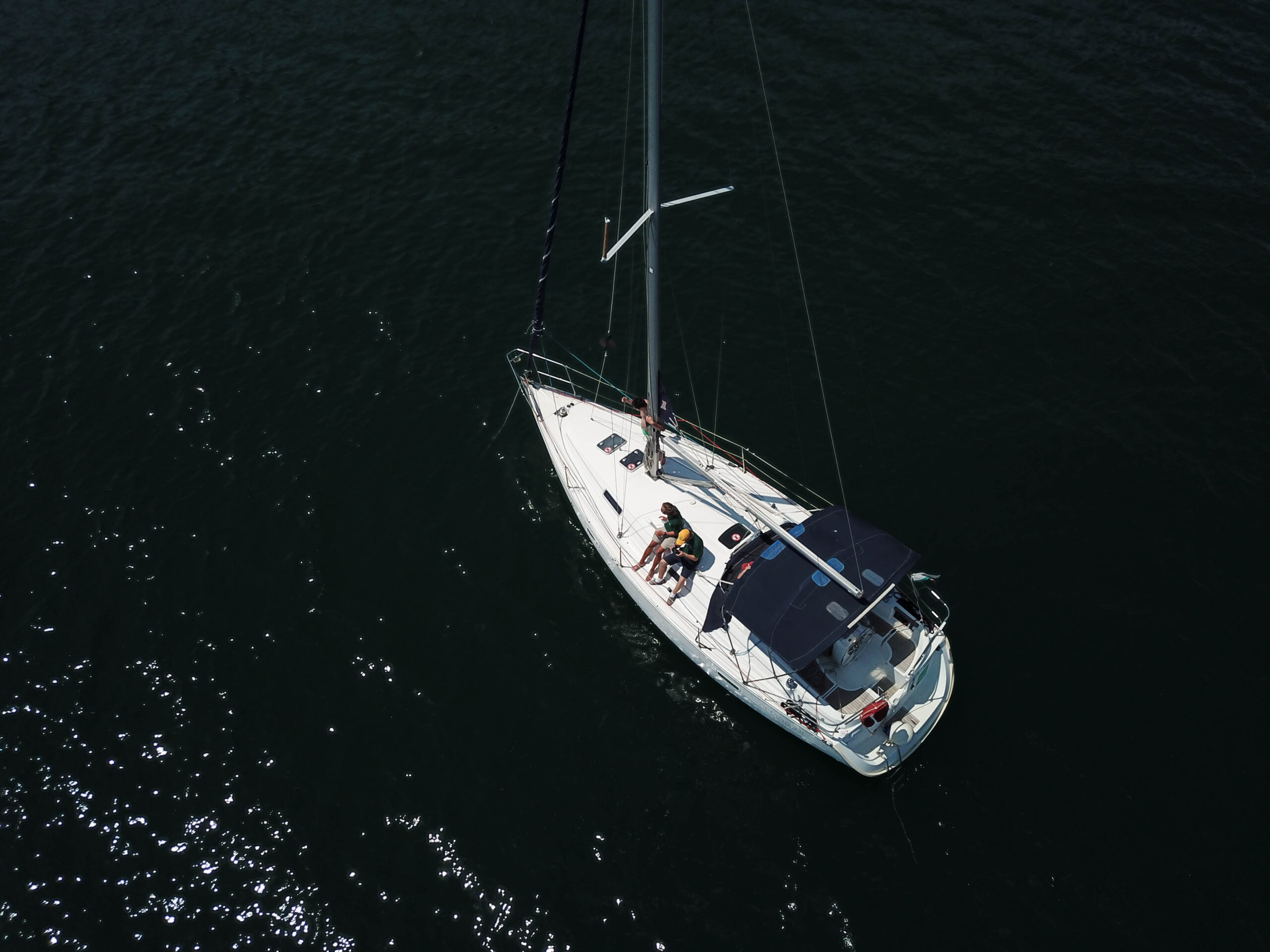Pre-departure checklist
Above Deck & Below Deck
Boat Safety & Equipment Checklist
It includes checks for your vessel, safety gear, and documentation.
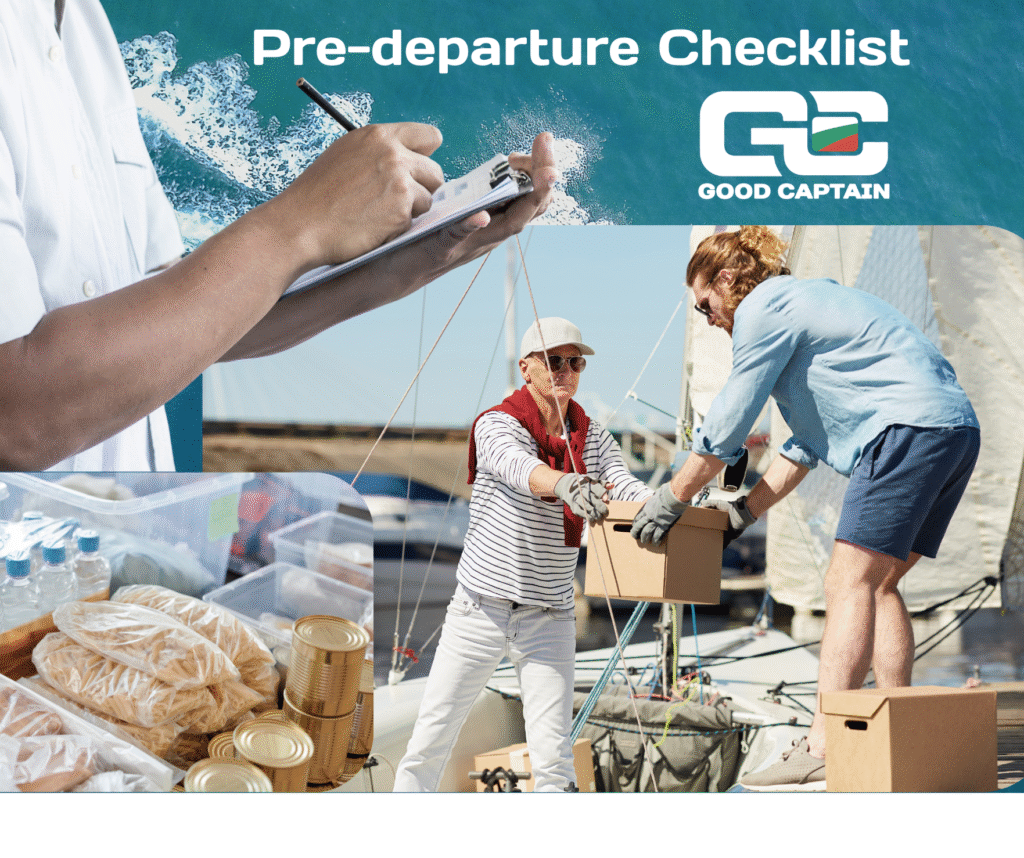
Above Deck Pre-departure Checklist
Inspect and verify the following items:
- Sails and spars – Are they rigged properly and in good condition?
- Rigging – Check standing and running rigging for wear or tension issues.
- Winches and handles – Present and operational.
- Anchor and anchor winch – Check attachment and working status.
- MOB ring with light – Ensure it’s mounted and functioning.
- Life raft – Confirm it’s secured and accessible.
Below Deck Pre-departure Checklist
Ensure systems and safety gear are ready:
- Battery levels – Check terminals, voltage, and secure mounting.
- Bilge – Dry and clean, bilge pump operational.
- Engine fluids – Oil, coolant, and fuel at proper levels.
- Navigation equipment – GPS, chartplotter, compass, VHF radio working.
- First Aid & safety gear – Fire extinguisher, flares, harnesses, etc.
- Fresh water and provisions – Sufficient supplies for entire passage.
- Also check sea cocks, fuel valve, and secure all gear.
Pre-Departure Safety Checklist
Before heading out, make sure your vessel is ready and your crew is informed. This essential checklist covers the key safety and operational items to review before every trip.
1. Personal Flotation Devices (PFDs)
- Carry at least one Coast Guard-approved life jacket per person—and a minimum of two total, even if boating alone.
- All vessels (including canoes, kayaks, and rowboats) must have at least one CG–approved Type I, II, III, or V PFD for each person on board. In addition to the above requirements, vessels 16 feet in length or longer (except canoes, kayaks, and rowboats) must have one CG–approved Type IV throwable device on board.
- Show passengers where PFDs are stored.
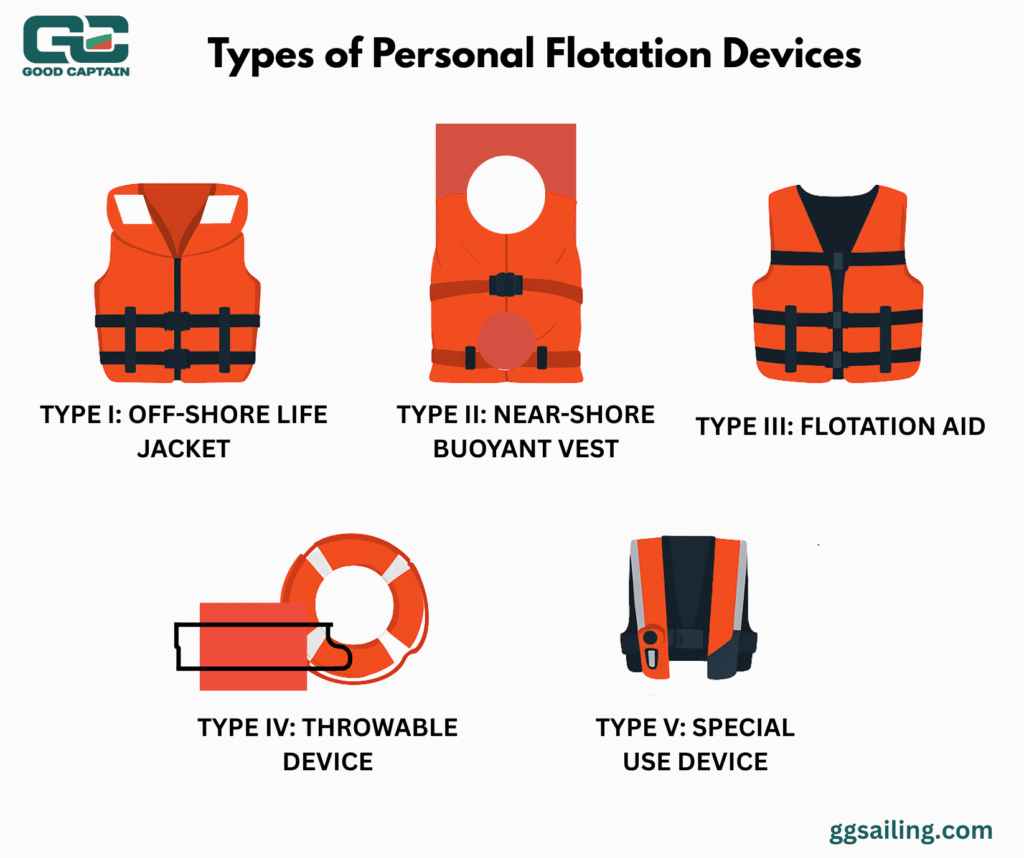
Types of personal flotation devices
Type I: Off-shore life jacket
Over 20 lbs (approx. 9.1 kg or 9100 g) of buoyancy, designed to turn an unconscious person face-up.
Type II: Near-shore buoyant vest
Minimum 15.5 lbs (approx. 7.0 kg or 7030 g) of buoyancy, designed to turn an unconscious person face-up.
Type III: Flotation aid
Minimum 15.5 lbs (approx. 7.0 kg or 7030 g) of buoyancy, not designed to turn an unconscious person face-up; more comfortable for water sports.
Type IV: Throwable device
Minimum 16.5 lbs (approx. 7.5 kg or 7480 g) of buoyancy, designed to be grasped, not worn.
Type V: Special use device
Must be used in accordance with any requirements on the approval label. Buoyancy varies depending on the specific design but usually meets or exceeds 15.5 lbs (approx. 7.0 kg or 7030 g).
2. Sound-Producing Devices
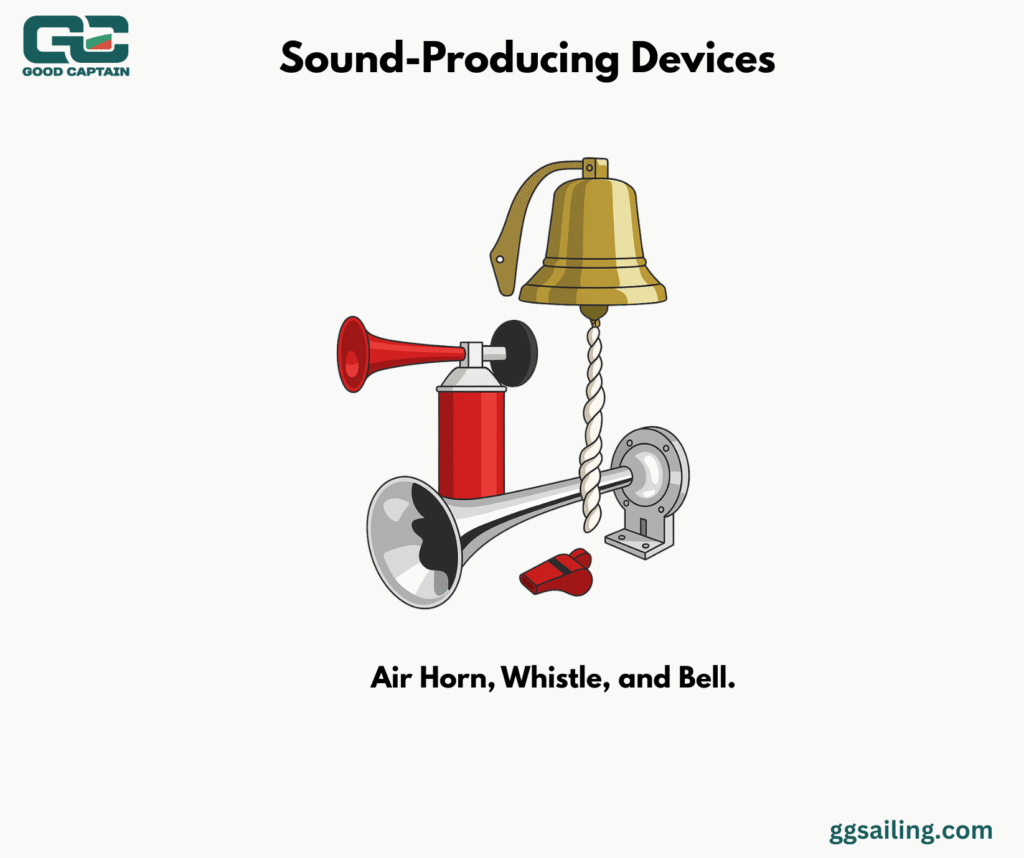
- Have at least two sound-signaling devices: air horn, whistle, or bell.
- If using an air horn, bring a spare can of compressed air.
3. Navigation & Emergency Lights
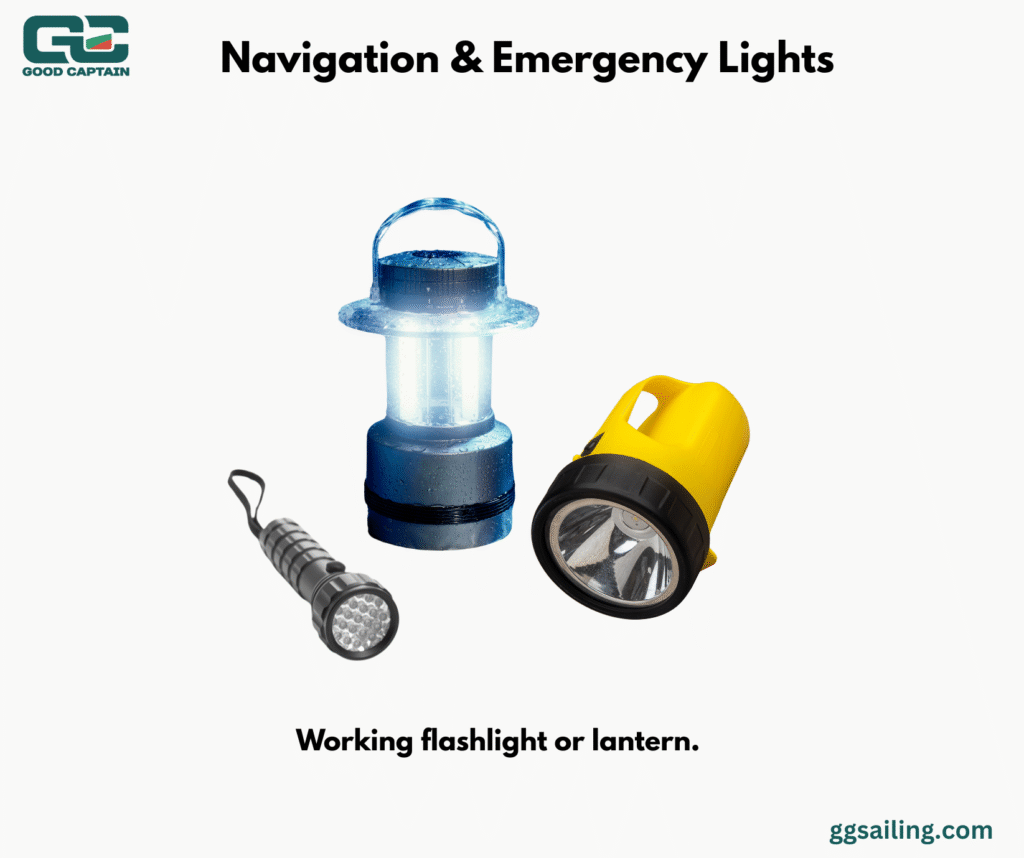
Sailboats Navigation Lights - Region A
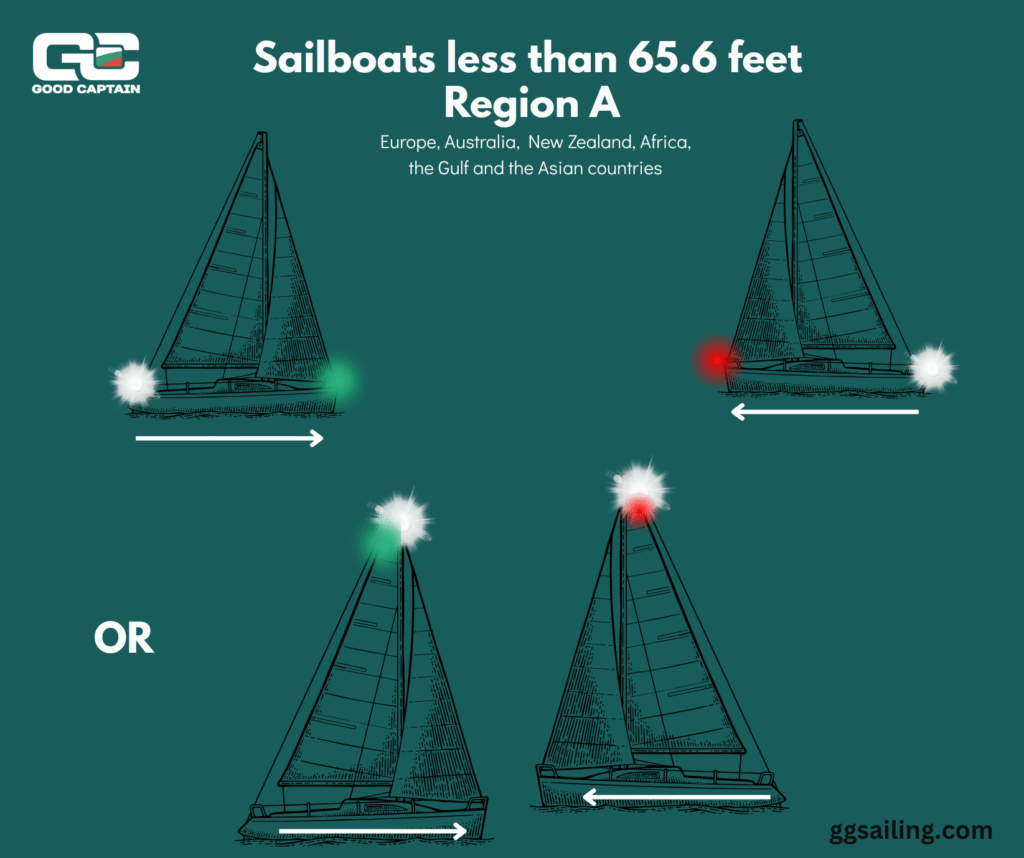
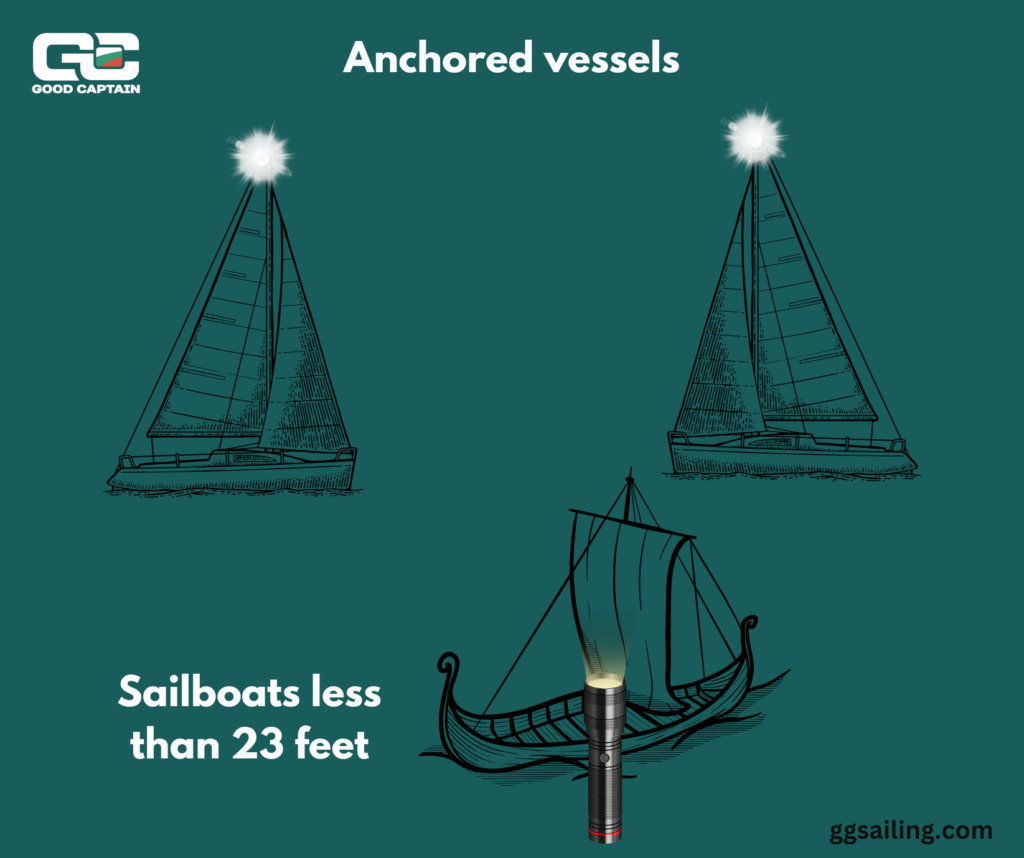
4. Visual Distress Signals
- Keep flares and visual distress signals in a dry, accessible place.
- Make sure everyone knows their location and how to use them.
5. Docking & Anchoring Gear
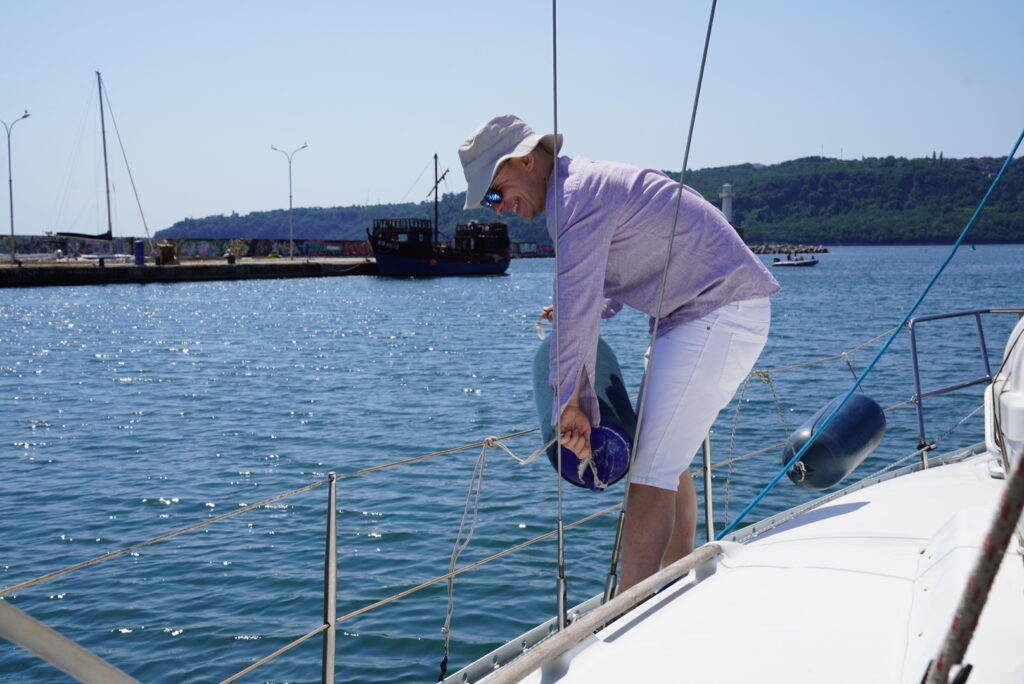
- Carry at least one anchor with a properly attached line.
- Pack two fenders and spare dock lines.
- Check all gear for wear or damage.
6. Required Documentation
- Bring your boat registration, ownership documents, radio license, fishing permits, and boater education card.
- Keep local charts onboard for navigation reference.
7. Fire Extinguishers
- Have a Coast Guard-approved fire extinguisher on board.
- Confirm it’s securely mounted, not expired, and easy to reach.
- Inform passengers of its location.
8. Emergency Preparedness
- Review emergency procedures (fire, overboard, rough weather) with passengers.
- Ensure the VHF radio is functional and everyone knows how to use it.
Keep a first aid kit accessible and stocked.
9. Tools & Spares
- Store a basic tool kit with essentials like a fuel filter, light bulbs, and multi-tool.
- Include extra fuses, tape, and batteries.
10. Fuel, Fluids, and Ventilation
- Top off your fuel, oil, and coolant before departure.
- Use a fuel log if applicable.
Run the blower for 4 minutes before starting the engine on powered boats. Investigate any lingering fumes.
11. Bilge, Pump, and Battery Check
- Inspect that the bilge is clean and dry.
- Test that the bilge pump is working properly.
- Confirm the battery is charged and terminals are secure.
- Bring spare batteries for radios, flashlights, and other devices.
12. Weather Check and Float Plan
- Always check the marine forecast before departure.
- Use a handheld radio to monitor real-time weather while underway.
- Share a float plan with someone onshore. Include: Vessel details, Route, Passenger info, Return time.
